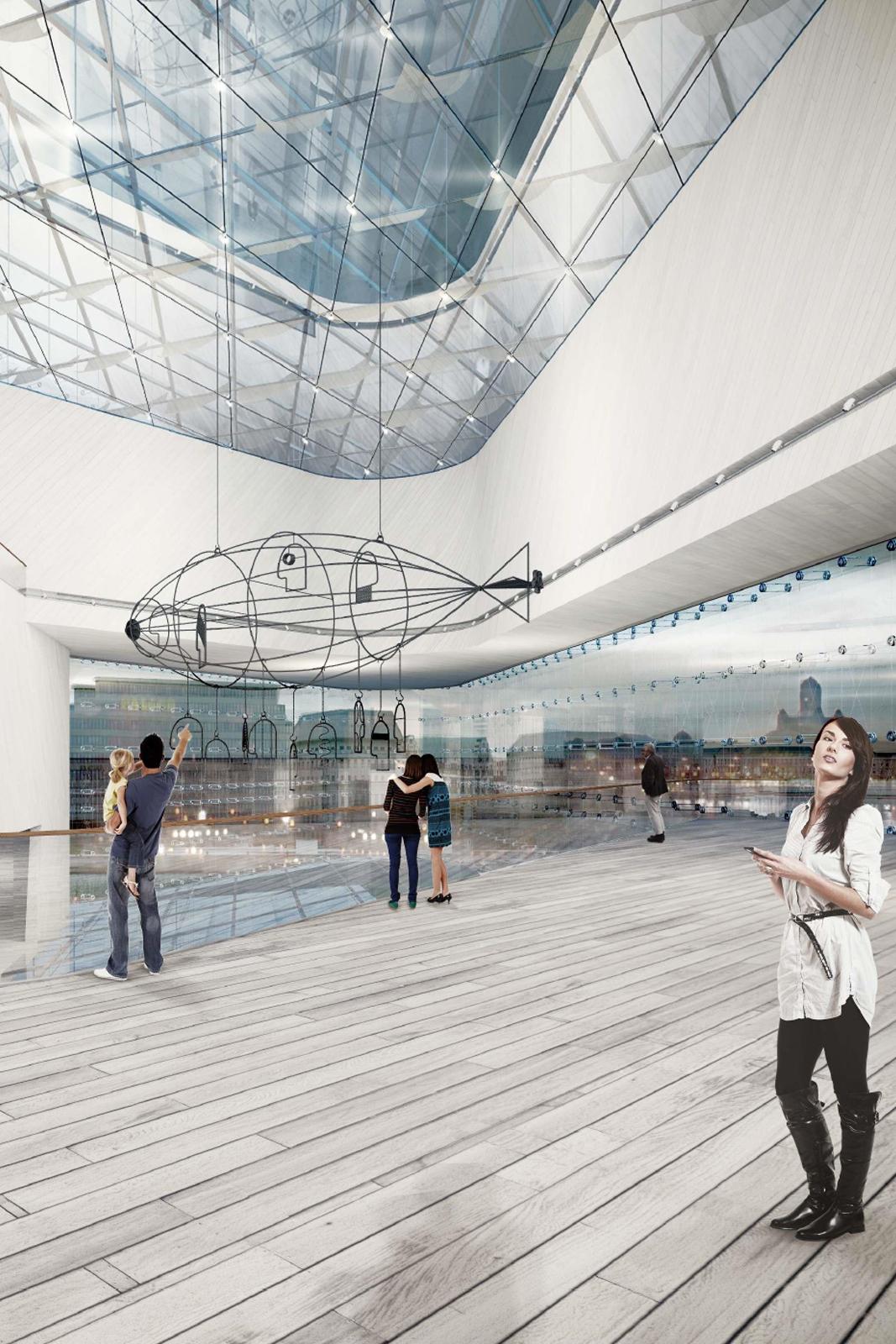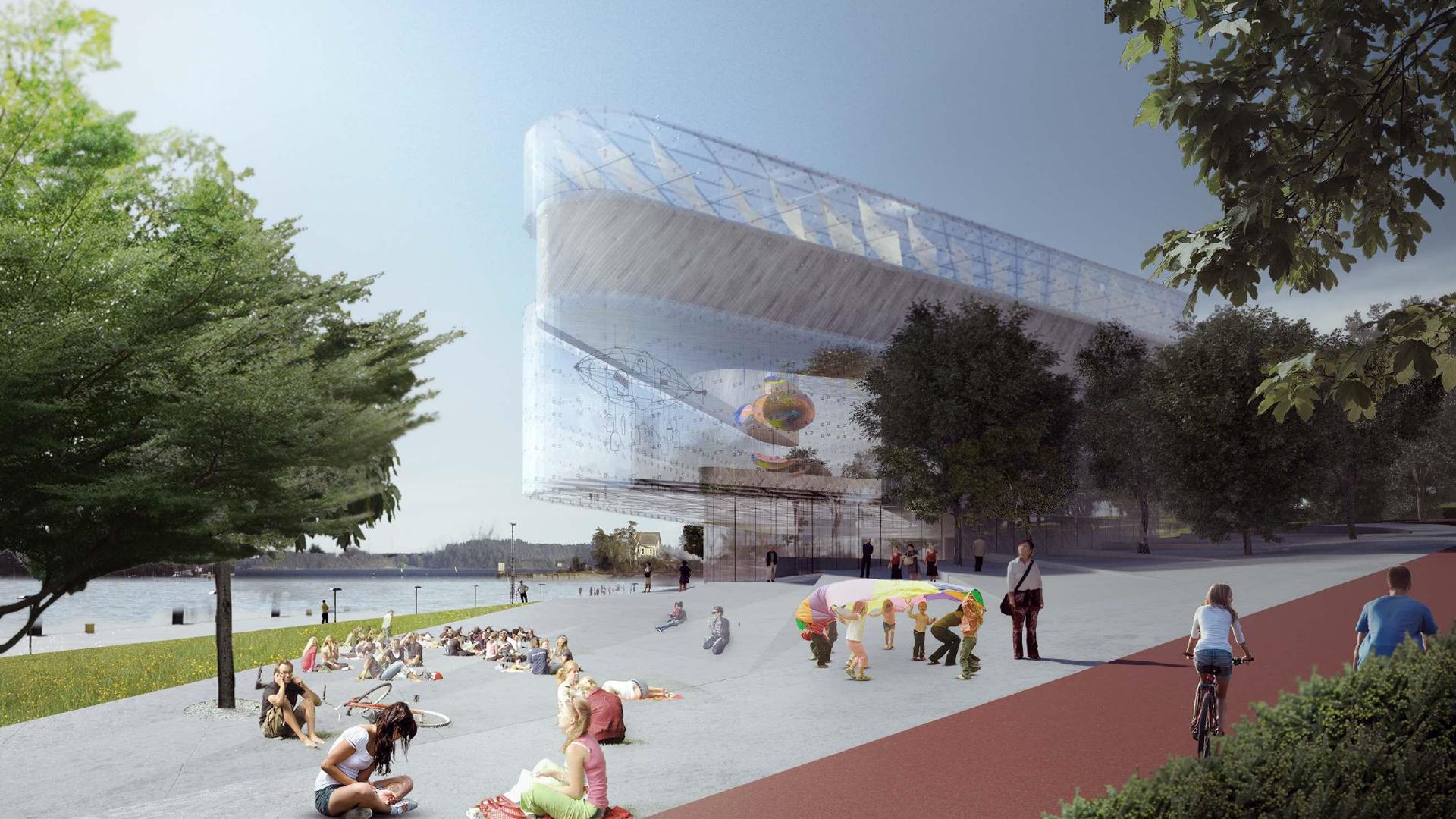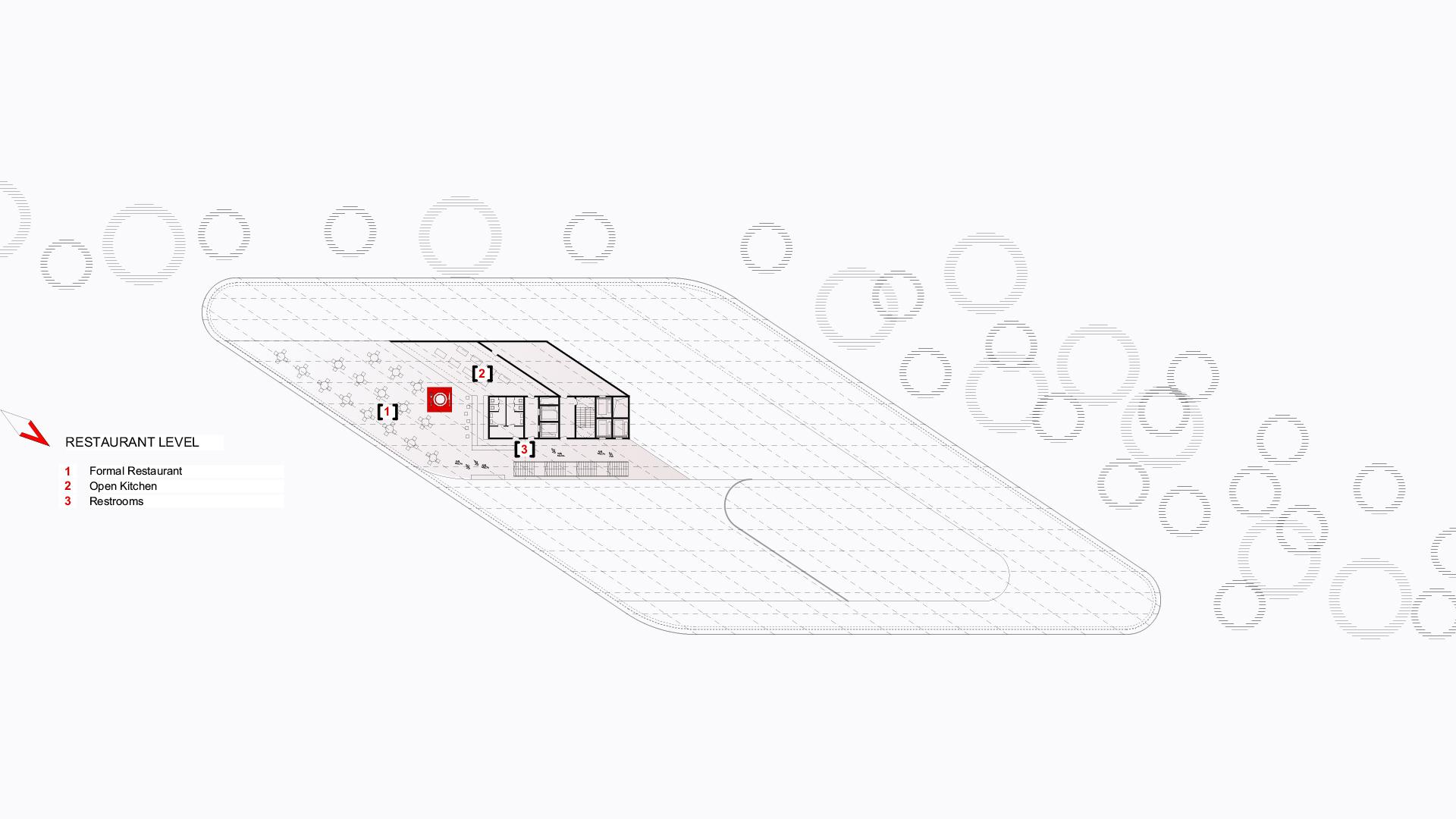Our competition design for the Helsinki Guggenheim Museum with its loosely edited spaces and opennes reflects Finnish mentality. It provides place for art and at the same time it is also an important part of the rehabilitation of the harbour.
The Helsinki harbour is the biggest in Finland and the second biggest among Nordic countries. The commercial shipping of the dynamically progressing capital at the same time was relocated into the outskirts of the city centre. The South harbour of the city focuses on tourism and passenger shipping so the rehabilitation of this became a crucial urban development issue. More so as we can find such important sights in the neighbourhood like the Uspensky Cathedral, Senate Square, Market Square, the Old Market Hall, the Palace Hotel and so on. The new museum would have been situated on the park side of the gulf in cooperation with the Museum of Finnish Architecture and the Design Museum. The vision included an entirely new museum district where the new museum building was a gem of the gulf and the symbol of Finnish art.

The city, that is right at the entrance of the Finnish Gulf, not far from Saint Petersburg and Tallinn has already been the cultural centre of the region. This resulted in Guggenheim Foundation’s negotiations with the city in order to establish a new museum. Guggenheim Museum Helsinki would have been the fifth Guggenheim Museum in the world after New York, Venice, Bilbao and Abu Dhabi. These museums became symbols with their iconic appearance and were designed by such reputable architects like Frank Lloyd Wright or Frank Gehry. So, to cut a long story short, in 2014 the city of Helsinki and Guggenheim Foundation initiated an international design competition for a 21st century museum building in the South Harbor.

There were a total of 1715 entries for the competition which made it one of the biggest ever design competitions in history. The competition was successfully organised, nevertheless the project has never been implemented. The population decided to focus on Finnish cultural values in attracting tourists without involving an international brand. Their decision is sensible, yet it does not solve the problematic of the South Harbour. Our studio’s concept actually concentrated on this very issue.

The volume of the building is imbedded in the historic structure of the city with its rhombus shape. With its floors that are floating on top of one another, the building connects the city centre, the nearby park and the industrial harbour almost invisibly. Its transparent, open community spaces offer a meeting point for both tourists and local art groups. Arriving from the direction of the city centre we can peep into the building from a distance through the gigantic transparent surfaces of the exhibition areas. The exciting views and the glass roof of the three- floor high exhibition space that is floating above the entrance are inviting the visitors for further investigation.

Throughout the long, hard winters it is essential to have light therefore in our concept the spaces surrounded by glass surfaces function like lanterns in the gulf.
Level of arrival is lifted to the first floor, which is accessible through a wide ramp from the direction of the city. Visitors from the direction of the hilly park arrive on this level through a pedestrian passage. Natural light and the wooden panels so typical of Finnish architecture evoke the greenary of the park. The three museum floors of the building and the different size multi floor exhibition areas are flexible. On the top floor there is a sky bar and restaurant with perfect panorama on the gulf and also into the exciting interior of the building. The building is covered by a double-glazed glass structure with rhombus shape sails in between the layers to provide shade. Other maintenance facilities are positioned below the arrival level, on the level of the harbour with direct connection to the existing service road.
Project info
- Project Name Guggenheim Helsinki Desigh Competition
- Location Helsinki, Finnland
- Dimensions 12 400 m2 (net)
- Project Year 2014
- Organizer Malcolm Reading Consultants (MRC)
- General Design BORD Architectural Studio
- Head Architect Peter Bordas
- Architect Team Robert Benke, Gabriella Gaspar, Robert Gulyas, Tamas Mezey, Tamas Tolvaj, Kata Zih












